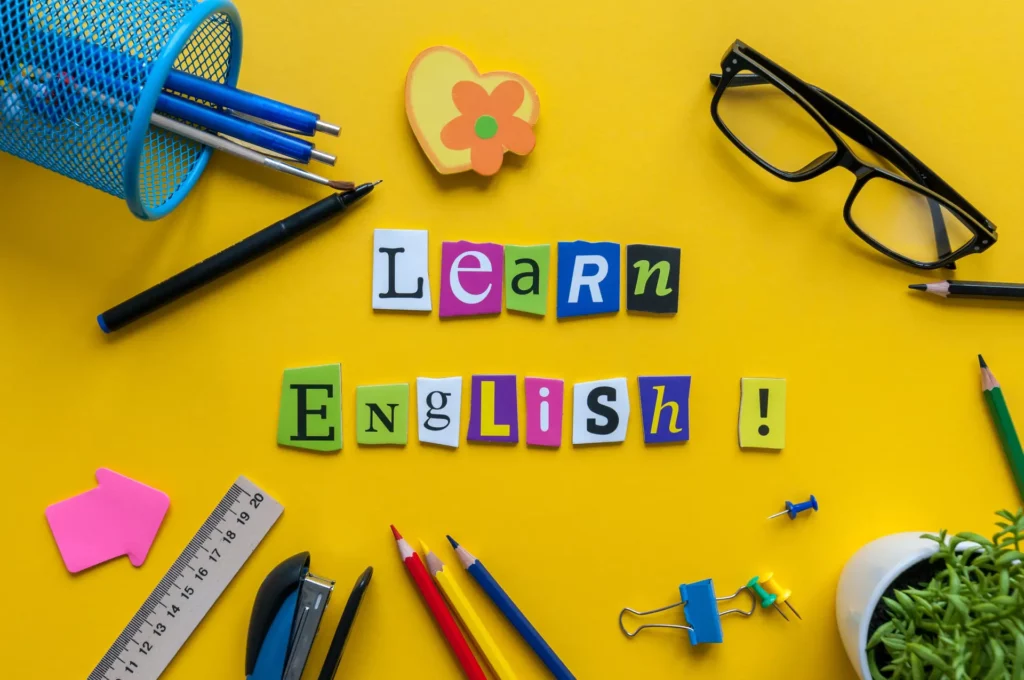Common Grammar Challenges for English Language Learners
Common Grammar Challenges for English Language Learners – Navigating the intricacies of English grammar can be a daunting journey for English Language Learners (ELLs). With its vast vocabulary, idiosyncratic grammar rules, and numerous exceptions, the English language presents a unique set of challenges that can perplex even the most diligent learners. For individuals learning English as an additional language, these grammatical hurdles can significantly impact their ability to communicate effectively in everyday conversations and academic settings. Overcoming these challenges is crucial for linguistic proficiency and personal, educational, and professional success.
The importance of addressing these grammar challenges cannot be overstated. A solid grasp of grammar lays the foundation for clear and coherent communication, enabling learners to express their thoughts, ideas, and emotions accurately. Moreover, proficiency in grammar is often a prerequisite for academic advancement and professional opportunities, making it a critical area of focus for ELLs.
This guide aims to identify the common grammatical challenges English Language Learners face and offers practical strategies for overcoming them. We seek to demystify English grammar through explanations, examples, and targeted exercises, making it more accessible and manageable for learners. By equipping ELLs with the tools and knowledge to tackle grammatical obstacles, we aspire to foster confidence, enhance communication skills, and pave the way for successful language acquisition.

Part 1: Understanding the Landscape
Diversity of English Language Learners
English Language Learners come from various backgrounds, bringing unique experiences, languages, and perspectives to the learning process. This diversity enriches the learning environment and introduces variability in learners’ challenges. Some ELLs may have been exposed to English early, while others might only begin their linguistic journey in adulthood. Additionally, the grammatical structures of learners’ native languages can significantly influence their understanding and acquisition of English grammar, making some concepts more intuitive and others more foreign.
The Role of Grammar in Language Proficiency
Grammar is the scaffolding upon which language is built. It governs how words are combined into sentences, ensuring communication is structured and meaningful. For ELLs, mastering grammar is essential for several reasons:
- Facilitating Comprehension: A strong foundation in grammar aids in understanding spoken and written English, enabling learners to follow conversations, read texts, and grasp the nuances of the language.
- Enhancing Communication: Proficiency in grammar allows ELLs to convey their thoughts clearly and accurately, reducing misunderstandings and fostering more effective interactions.
- Academic and Professional Success: In academic and professional settings, grammatical accuracy is often equated with credibility and competence. ELLs who demonstrate a solid grasp of English grammar are likelier to succeed in these environments.
The journey to mastering English grammar is multifaceted, requiring learners to navigate a complex landscape of rules, exceptions, and nuances. Understanding the diversity of ELLs and the pivotal role of grammar in language proficiency is the first step in addressing the common challenges ahead. By acknowledging the varied backgrounds of learners and the fundamental importance of grammatical mastery, educators and learners can approach the task of learning English grammar with clarity, purpose, and strategic focus.

Part 2: Common Grammatical Hurdles
Certain grammatical elements consistently prove more challenging than others for English language learners. Understanding these common hurdles is the first step toward overcoming them.
Article Usage (a, an, the)
One of the first stumbling blocks for ELLs is the correct usage of articles. English distinguishes between definite (“the”) and indefinite articles (“a,” “an”), a concept that may not exist in many other languages. Learners often struggle with when to use each article or omit the article entirely, as in the case of uncountable nouns or general statements.
- Strategies: Practice with real-life examples and focus on rules governing article use, such as using “a” before consonant sounds and “an” before vowel sounds. Highlight patterns and exceptions in context to aid memorization and comprehension.
Tense and Aspect
English verbs express a complex system of tense and aspect, including simple, perfect, and continuous constructions across the past, present, and future. Learners may find it challenging to choose the correct tense to accurately convey the time of an action and the aspect to express the nature of the action’s occurrence.
- Strategies: Use timelines and visual aids to illustrate the differences between tenses. Encourage writing and speaking exercises focused on specific tenses, gradually combining them to practice aspect and tense concordance.
Prepositions
Prepositions can be notably perplexing due to their abstract nature and the lack of consistent rules governing their use. The same preposition can have different meanings depending on the context, and other prepositions can sometimes be used in seemingly similar contexts.
- Strategies: Teach prepositions in thematic groups (e.g., prepositions of time, place, and movement) and encourage using prepositional phrases in context. Visual aids and physical activities (e.g., demonstrating “on,” “in,” and “under” with objects) can also be effective.
Subject-Verb Agreement
Ensuring that the verb agrees in number and person with the subject can be challenging, especially in complex sentences or collective nouns, which might follow different rules in the learner’s native language.
- Strategies: Simplify sentences to identify subjects and verbs before matching them for agreement. Practice with sentences that vary in complexity and introduce exceptions gradually.
Modal Verbs and Auxiliary Verbs
Modal verbs (can, could, might, should, etc.) and auxiliary verbs (be, have, do) can be confusing due to their varied uses, meanings, and forms in questions, negatives, and short answers.
- Strategies: Introduce modals and auxiliaries through their functions (ability, possibility, permission, etc.) and practice through role-play or scenario-based exercises. Create reference charts for quick review.

Part 3: Strategies for Overcoming Challenges
Addressing ELLs’ grammatical challenges requires a multifaceted approach, blending theory with practical application.
Contextual Learning
Learning grammar in isolation can be ineffective. Integrating grammatical lessons within the context of meaningful communication ensures that learners understand the practical application of rules.
- Strategies: Incorporate grammar lessons into reading, speaking, and writing activities. Use authentic texts and real-life communication scenarios to teach grammar in context.
Visual Aids and Mnemonics
Visual aids, charts, and mnemonics can help learners remember rules and patterns, making abstract concepts more tangible.
- Strategies: Create visual representations of tense timelines, prepositional relationships, and article usage rules. Develop mnemonic devices to help remember irregular verb forms or exceptions.
Practice and Repetition
Consistent practice is critical to mastering grammatical structures. Repetition, through varied exercises, helps reinforce learning and aids in the retention of rules.
- Strategies: Implement daily practice sessions focused on targeted grammatical structures. Use a mix of writing exercises, speaking drills, and interactive activities to reinforce learning through repetition.
Feedback and Correction
Timely and constructive feedback helps learners understand their mistakes and learn from them. Encouraging self-correction fosters independence and deeper grammatical understanding.
- Strategies: Provide immediate, specific feedback during exercises. Encourage peer review and self-correction activities to promote active learning and reflection on errors.
By addressing common grammatical hurdles with targeted strategies, educators can guide English Language Learners through the complexities of English grammar, paving the way for improved communication skills and greater confidence in their language abilities.

Part 4: Resources for Learning and Practice
Equipping English Language Learners (ELLs) with the right resources is crucial for navigating the complex landscape of English grammar. A blend of traditional and digital tools can cater to diverse learning preferences and enhance the educational experience.
Recommended Textbooks and Workbooks
Select textbooks and workbooks designed explicitly for ELLs, focusing on incremental learning and practical application. Look for resources that:
- Offer clear explanations of grammar rules, accompanied by examples.
- Include exercises that range from basic to advanced, allowing for progressive mastery.
- Feature culturally diverse content to engage learners from various backgrounds.
Online Resources and Apps
The digital age offers a wealth of interactive learning tools that make grammar practice engaging and accessible:
- Utilize language learning apps that offer gamified grammar lessons, instant feedback, and the ability to practice at one’s own pace.
- Direct students to reputable online grammar quizzes and exercises tailored to ELLs, which can reinforce classroom learning and provide additional practice.
- Encourage online dictionaries and grammar checkers as tools for independent learning and self-correction.
Language Exchange and Conversation Groups
Real-world practice is invaluable for applying grammatical knowledge in conversational settings:
- Facilitate language exchange programs where ELLs can practice English with native speakers, applying grammar in a natural context.
- Organize conversation groups focused on thematic discussions, where participants can practice specific grammatical structures in a supportive environment.

Part 5: Encouraging Persistence and Patience
Mastering grammar as an English Language Learner is a journey marked by progress and setbacks. Cultivating a supportive learning environment that encourages persistence and patience is essential for long-term success.
The Importance of a Growth Mindset
Instill a growth mindset in learners, emphasizing that mistakes are opportunities for learning and improvement. Encourage learners to:
- View grammar mastery as a gradual process that requires time and effort.
- Celebrate small victories and progress in their grammatical understanding.
- Remain open to continuous learning and adaptation.
Setting Realistic Expectations
Help learners set achievable goals for their grammar mastery, recognizing the incremental nature of language learning. Guide them to:
- Focus on mastering one grammatical concept at a time rather than striving for perfection across all areas.
- Reflect on their learning journey, acknowledging the improvement over time.
- Understand that achieving fluency is a long-term goal, requiring patience and sustained effort.
Concluding Common Grammar Challenges for English Language Learners
Navigating the complexities of English grammar is a formidable challenge for English Language Learners, yet it is undeniably rewarding. By understanding the common grammatical hurdles and employing strategic approaches to overcome them, learners can gradually demystify English grammar and enhance their language proficiency. Incorporating a mix of traditional and digital resources, practical application, and real-world practice ensures a well-rounded learning experience that addresses diverse needs and learning styles.
Fostering an educational environment that celebrates progress, encourages resilience, and sets realistic expectations is crucial for sustaining motivation and commitment to the language learning journey. As educators and learners embrace these principles, the path to grammatical mastery becomes clearer, leading to improved communication skills, greater confidence, and opportunities for personal and professional growth.
Ultimately, the journey to overcoming grammatical challenges is not just about mastering a set of rules but about unlocking the vast potential of the English language for communication, expression, and understanding. With persistence, patience, and the right strategies, English Language Learners can transform their grammatical challenges into stepping stones toward fluency and success.

Further Exploration
For those eager to dive deeper into the intricacies of English, countless resources await. From comprehensive grammar guides to interactive language learning platforms, the tools at your disposal are more accessible than ever. Engage with these materials, challenge yourself with new exercises, and remain curious and open to discovery. We offer a line of comprehensive grammar and punctuation courses and feature a mastery quiz bundle to cement your further mastery of grammar and punctuation. Feel free to access the endorsed resources below to enhance your learning experience.





